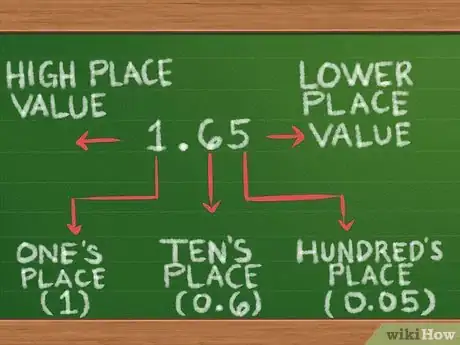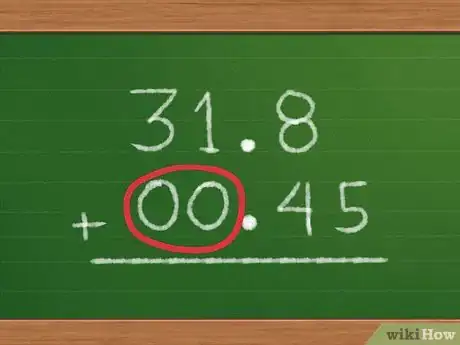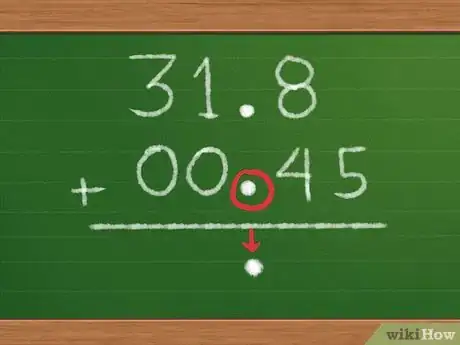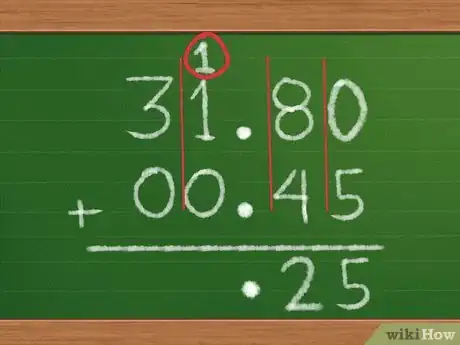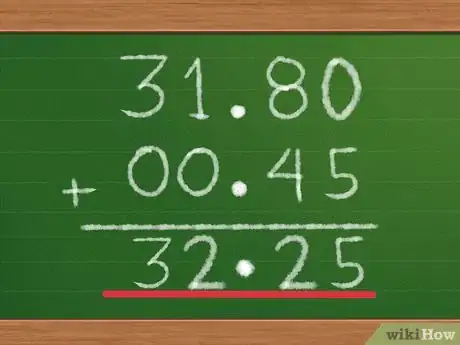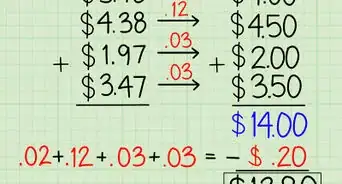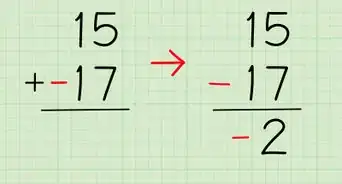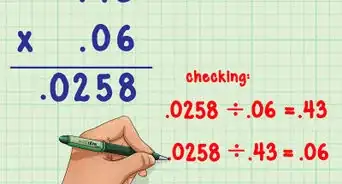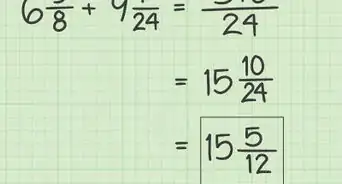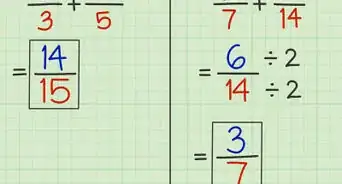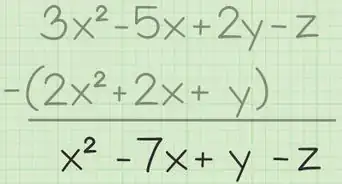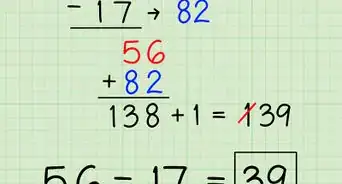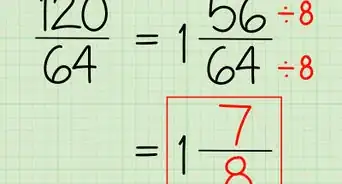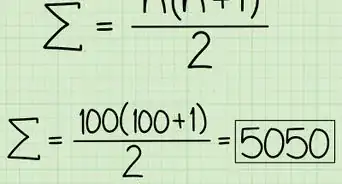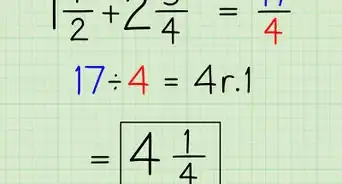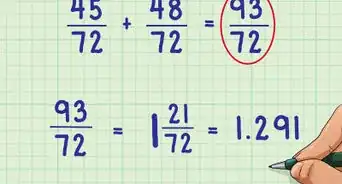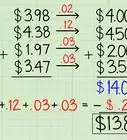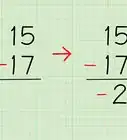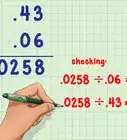This article was co-authored by Jake Adams. Jake Adams is an academic tutor and the owner of Simplifi EDU, a Santa Monica, California based online tutoring business offering learning resources and online tutors for academic subjects K-College, SAT & ACT prep, and college admissions applications. With over 14 years of professional tutoring experience, Jake is dedicated to providing his clients the very best online tutoring experience and access to a network of excellent undergraduate and graduate-level tutors from top colleges all over the nation. Jake holds a BS in International Business and Marketing from Pepperdine University.
This article has been viewed 50,830 times.
Adding decimals is almost exactly like adding integers. All you have to do is line up the decimal points, and make sure to write the decimal point in your number as well.[1]
Steps
Basic Concepts
Skip ahead to Adding Decimals if you already understand decimals.
-
1Understand place values. A normal number can have more than one digit, each one with a different place value.[2]
- The number 472, for instance, has a 2 in the "one's place," a 7 in the "tens place," and a 4 in the "hundreds place."
- This means that the 2 is just worth 2, but the 7 (in the tens place) is ten times as big as it looks. It actually means 70. The 4 in the hundreds place is ten times as big again and means 400.
-
2Understand decimals. If adding digits to the left of a number gets to higher and higher place values, it makes sense that digits to the right of a number get smaller and smaller. To show that we're using place values smaller than one, we place a decimal point after the one's place. Just like digits to the left get bigger in multiples of ten, the digits after the decimal point have a place value that gets divided by 10 each time you move right.[3]
- For example, the number 1.65 has a 1 in the one's place, a 6 in the tenths place, and a 5 in the hundredths place. The 6 is one-tenth as big as it looks (0.6), and the 5 is one-hundredth the size of a regular 5 (just 0.05).
Adding Decimals
-
1Line up the decimal points of the numbers you're adding. Whenever you add decimals, write each number on a separate line, in one vertical stack. Always line up the decimal points, so each digit in a column has the same place value.[4]
- For example, to solve 31.8 + 0.45, write 31.8 over 0.45, with the 1 over the 0 (both in the one's place) and the 8 over the 4 (both in the tenths place).
-
2Extend numbers with zeroes if necessary to line them up. Sometimes your numbers won't neatly line up, because they don't have the same number of digits or they don't use digits in the same place value. If this happens, add 0s to the beginning and/or end of the numbers so they have the same number of digits. This doesn't change the value of the number, since it means there's nothing in that place value.[5]
- For example, you can write 31.8 + 0.45 as 31.80 + 00.45, so they line up over each other.
-
3Bring down the decimal point. Write the decimal point on the answer line, directly below the decimal points lined up in the problems you're adding.
-
4Add the numbers in the right column. At this point, it's exactly like a regular addition problem. Add up the numbers in the column furthest to the right and write the answer on the answer line, directly beneath them.
- For example, to solve 31.80 + 00.45, start with 0 + 5. Write the answer, 5, beneath that column. 31.80 + 00.45 = _ _ . _ 5.
-
5Move left and repeat, carrying the 1 if you get an answer 10 or greater. Remember, just like ordinary addition, if you get a two-digit answer, you need to "carry the 1" into the next column on the left.
- In our example problem, the next column to add is 8 + 4. The answer is 12, which can't fit in one digit of the answer. Write the 2 in the answer line, and carry the 1 into the column to the left, writing it as a small number above the column.
- 31+1.80 + 00.45 = _ _ . 2 5.
-
6Continue until you run out of columns. Continue just like you would for an ordinary addition problem until all the digits have been added. Remember to include "carried numbers" in your addition.
- Adding the next column in our example: 31+1.80 + 00.45 = _ 2 . 2 5.
- Adding the final column (3 + 0) we get 32.25.
Community Q&A
-
Questionhow can I add decimals with pictures?
 Caleb SimcoeCommunity AnswerTurn the decimals to fractions, then draw a fraction bar, then add the fractions together and turn the answer back to a decimal.
Caleb SimcoeCommunity AnswerTurn the decimals to fractions, then draw a fraction bar, then add the fractions together and turn the answer back to a decimal. -
QuestionHow do I subtract a decimal?
 ArDv005Community AnswerSubtracting decimals is exactly like adding decimals. All you have to do is align (decimal points), fill-in (0's), perform (-), and subtract them as if they were whole numbers.
ArDv005Community AnswerSubtracting decimals is exactly like adding decimals. All you have to do is align (decimal points), fill-in (0's), perform (-), and subtract them as if they were whole numbers. -
QuestionHow do I subtract decimals with whole numbers, such as 28 - 13.5?
 DonaganTop AnswererWrite the first number as 28.0. Make sure the decimal points line up vertically. Then subtract as usual, placing the decimal point of the answer immediately below the other decimal points.
DonaganTop AnswererWrite the first number as 28.0. Make sure the decimal points line up vertically. Then subtract as usual, placing the decimal point of the answer immediately below the other decimal points.
Examples
Try to solve these on your own, then highlight the space to the right of the equal sign to check your answer. The hardest problems are at the bottom.
- 2.25 + 1 = 3.25
- 7.66 + 0.3 = 7.96
- 0.478 + 0.032 = 0.51
- 0.042 + 0.0601 = 0.1021
- 2.3 + 4.55 + 1.19 = 8.04
Expert Interview
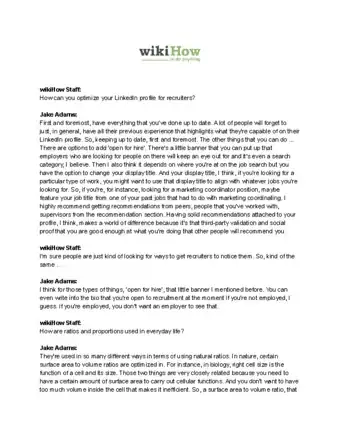
Thanks for reading our article! If you'd like to learn more about learning mathematics, check out our in-depth interview with Jake Adams.
References
- ↑ https://www.emathhelp.net/notes/pre-algebra/decimals/adding-decimals/
- ↑ https://www.mathsisfun.com/place-value.html
- ↑ https://www.splashmath.com/math-vocabulary/decimals/decimal
- ↑ https://www.khanacademy.org/math/arithmetic/arith-decimals/arith-review-add-decimals/v/adding-decimals
- ↑ http://www.mathsisfun.com/adding-decimals.html#zero
About This Article
To add decimals, write down the numbers you’re adding, and line up the decimal points. If your numbers don’t line up, add 0s to the beginning or ending of the number so they have the same number of digits. Write the decimal point on the answer line, directly below the decimal points in the problem. Then, add together the numbers from right to left, just like you would for a normal addition problem. Keep reading for some basic tips on working with decimals, like understanding place values!

